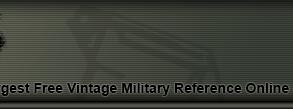|
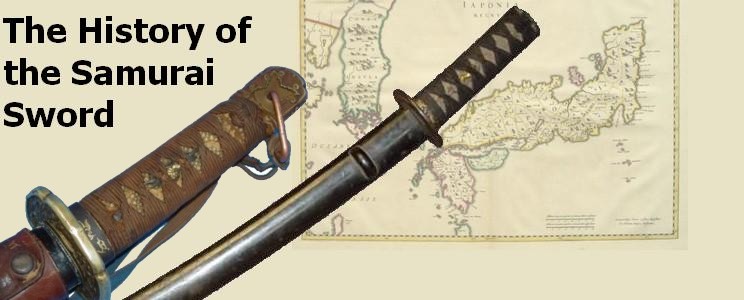
THE HISTORY OF THE SAMURAI SWORD, FROM THE EARLY DAYS TO THE PRESENT -
The Samurai sword is unquestionably the most well known sword in the history of the world.
Its presence in the batlefield as an astonishing weapon and in the homes of the Samurai warriors
beautifully adorning rooms, has been felt for the last 1500 years.
It is believe that it was originally started in China, then the technology moved to Korea
and finally ended up in Japan.
The development and evolution of the construction and design of the Samurai sword is closely
tied to the different periods in Japanese history. As technology and political events unfolded
in Japan, the Samurai sword morphed to adapt to the needs of the day.
The biggest challenge of the sword maker is to successfully combine two different qualities of
metal. The sword that is borned from this marriage is light, reliable in battle and practical.
The following section provides a comprehensive view of the various periods in Japanese history;
This information is brought to you courtesy of
MilitaryItems.com. The source for military
antiques and collectibles.
| ANCIENT PERIOD (Before AD 650) |
Swords of this period were primarily made by Chinese and Korean masters.
There aren't very many examples of these swords around today. This
period marks the begining of the Japanese culture under the reign of
emperor Jimmu.
The swords from this period were called "Chokuto". Unlike the current version, the blades
of these swords had a straight shape. No curvature. It is possible that some of these
swords were made in China.
Some of these swords have been found in tombs. Their blades are too thin to be designed for
combat. It is likely they were created for ceremonial purposes.
The first capital city of Japan was established during this period. New
laws were introduced and the imperial family established a stronghold.
The need for a better equipped army started creating the need for the
development of better swords.
| HEIAN PERIOD (794 to 1191) |
Kyoto became the capital of Japan and was ruled by the Fujirawa clan.
This era produced some of the best examples of Samurai swords as new
techniques were developed.
Warfare had evolved. Samurai warriors were now fighting from horseback. The old swords were
designed for a thrusting motion, the new swords will now require a slashing motion. This
required for the sword to have a curvature. In addition, the sword had to be light enough to
be hels with a single hand.
The length of the blade was incremented. The cutting edge was around 3 feet in length. The
curvature was uniform. The sword was very strong. The warrior would wear the sword slung from
the waist with the edge facing down.
The swords from this period are called "Tachi". The hammon was broader. This was the first time
that "Ashi" was employed. The Ashi were strips of soft steal positioned in the hardened area
of the edge. Designed to protect the blade when swords clashed in combat.
| KAMAKURA PERIOD (1192 to 1336) |
 |
Feudal Japan is started. The Shogunate form of government is in place.
The Mongols attempt to invade Japan and are met by Kamatura warriors who
defend the island ferociously. However, their weapons are no match to
the Mongol forces and are beaten. Suddenly, typhoon season starts and
the mongol ships are destroyed stopping the invasion of Japan.
The Kamakura warriors see the need for better swords and begin working on
developing better techniques. Some of the best built swords emerge at
this time. The Kamakura period is known as the golden age of the Samurai Sword.
Some of the advancements in sword development include the insertion of a soft core of low
carbon steal into the blade. This technique replaced the single piece of high carbon
construction employed earlier.
|
The size of the hardened edge was increased. The blades became broader with a bigger point.
The larger hardened area permitted for the sword to be polished multiple times. This is
quite an advancement in technology.
As a result of experiences fighting the Mongols, sword makers saw the need for the development
of a shorter sword. The reduction in size would make it easier to maneuver in hand to hand
combat. This marks the birth of the "Tanto" sword.
The importance of the foot soldier grew during this period. A reflection of this fact is that
the "Tachi" required two hands to be used.
Emperor Godaigo gathers up forces and manages to overthrow the Shogunate.
| Era Name |
Year |
Comments |
| Kennin |
1201 |
|
| Genkyu |
1204 |
|
| Ken-Ei |
1206 |
|
| Shogen |
1207 |
|
| Kenreki |
1211 |
|
| Kempei |
1213 |
|
| Jokyu |
1219 |
|
| Jo-O |
1222 |
|
| Gennin |
1224 |
|
| Karoku |
1225 |
|
| Antei |
1227 |
|
| Kwangi |
1229 |
|
| Jo-Ei |
1232 |
|
| Tempuku |
1233 |
|
| Bunreki |
1234 |
|
| Katei |
1235 |
|
| Beki-Nin |
1238 |
|
| En-O |
1239 |
|
| Ninji |
1240 |
|
| Kwangen |
1243 |
|
| Ho-Ji |
1247 |
|
| Enchou |
1249 |
|
| Shoka |
1257 |
|
|

|
| Era Name |
Year |
Comments |
| Shogen |
1259 |
|
| Bun-O |
1260 |
|
| Kocho |
1261 |
|
| Bun_Ei |
1264 |
|
| Kenji |
1275 |
|
| Ko-An |
1278 |
|
| Sho-O |
1288 |
|
| Sho-An |
1299 |
|
| Kengen |
1302 |
|
| kagen |
1303 |
|
| Tokuji |
1306 |
|
| Enkei |
1308 |
|
| O-Cho |
1311 |
|
| Showa |
1312 |
|
| Bumpo |
1317 |
|
| Gen-O |
1319 |
|
| Genko |
1321 |
|
| Shochu |
1324 |
|
| Kareki |
1326 |
|
| Gentoku |
1329 |
|
| Gen-Ko |
1331 |
|
| Kemmu |
1334 |
|
| Engen |
1336 |
|
|
| MUROMACHI PERIOD (1337 to 1573) |
The Shogunate returns to power. Japan is split in two as civil war
erupts. The conflict lasts for over 100 years and causes a huge supply of swords to appear.
Lack of materials, the need to outfit armies with swords in a short period of time, constant
attacks and other factors contributed to a sharp decline in the quality of the swords.
The constant fighting leads to the development of new technology. This period marks the birth
of the "Uchigatana". This is a companion sword measuring roughly 24 inches and designed for
single hand use. It was ideal for fighting indoors where the larger "Tachi" was not practical.
| Era Name |
Year |
Comments |
| Ko-Koku |
1340 |
|
| Shohei |
1346 |
|
| Kentoku |
1370 |
|
| Bunchu |
1372 |
|
| Tenju |
1375 |
|
| Ko-Wa |
1381 |
|
| Genchu |
1384 |
|
| O-Ei |
1394 |
|
| Shocho |
1428 |
|
| Ei-Ko |
1429 |
|
| Kakitsu |
1441 |
|
| Bun-An |
1444 |
|
| Ho-Toku |
1449 |
|
| Ko-Toku |
1452 |
|
| Kosho |
1455 |
|
| Choroku |
1457 |
|
|
| Era Name |
Year |
Comments |
| Kwansho |
1460 |
|
| Bunsho |
1466 |
|
| O-Nin |
1467 |
|
| Bunmei |
1469 |
|
| Cho-Ko |
1487 |
|
| Entoku |
1489 |
|
| Mei-O |
1492 |
|
| Bunki |
1501 |
|
| Eisho |
1504 |
|
| Dai-Ei |
1521 |
|
| Ko-Roku |
1528 |
|
| Tembun |
1532 |
|
| Ko-Ji |
1555 |
|
| Eiroku |
1558 |
|
| Genki |
1570 |
|
| Tensho |
1573 |
|
|
| AZUCHI-MOMOYAMA PERIOD (1574 to 1602) |
Japan is reunited under the control of the warrior Toyotomi Hideyoshi. The existing large
armies are put to use by invading China and Korea. A decree is issued that prohibits farmers
from owning swords.
This period saw the birth of the "Katana". Measuring between 24 to 30 inches in length. A
companion sword called the "Wakisashi" was also created. Measuring around 18 inches long.
The swords were meant to be worn together. This became an icon and tradition of the Samurai
warrior until the end of WWII when the swords were outlawed.
The swords were more appealing to the eye. They were more shiny and had larger hammons.
These styles of swords are known as Shinto (meaning "New sword"). As peace spread through the
country swords started becoming more an ornament or sign of status rather than a weapon.
Changes in warfare tactics are developed as a result of the introduction of the gun.
| Era Name |
Year |
Comments |
| Bunroku |
1592 |
|
| Keicho |
1596 |
|
| EDO PERIOD (1603 to 1867) |
Modern day Tokyo becomes the capital of Japan. This is a period of
relative peace. Japan's first contact with the west took place during this period with the
coming of Commodore Perry in 1853.
The quality of the Shinto blades were an improvement from those created during the warring
years. However, this came to an end when shortages of materials, high taxes and corruption
placed a heavy toll on the craft. Quality began to suffer again.
A chief swordsmith was appointed. This organization was in charge of issuing certificates to
individuals, allowing them to become authorized sword makers. It is thought that this
organization contributed to the fall in quality of the swords. They would sell the titles at a
very high price. In turn, the sword makers would charge an increased fee for their swords in
an effort to recuperate their investment and make some profit.
|
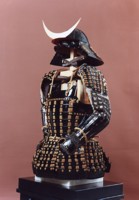 |
Nearly 1,000 people purchased the certification. Many of them produced blades at a very quick
rate compromising quality. An example is a maker named Tsuda Sukehiro, who produced a total
of 1,620 blades during his career.
The 1780's saw a revival of interest in quality. A new type of sword named the "Shishinto"
(Meaning New New Sword) was borned. One of the founders of this movement was named Suishinshi
Masahide. He traveled the country and trained around 100 sword makers.
In 1876 the Samurai class was abolished. It was illegal to wear swords in public. This marks
an end to the classical Samurai sword.
| Era Name |
Year |
Comments |
| Genwa |
1615 |
|
| Kwan-Ei |
1624 |
|
| Sho-Ho |
1644 |
|
| Keian |
1648 |
|
| Jo-O |
1652 |
|
| Meireki |
1655 |
|
| Manji |
1658 |
|
| Kwanbun |
1661 |
|
| Em-Po |
1673 |
|
| Tenwa |
1681 |
|
| Jo-Ko |
1684 |
|
| Genroku |
1688 |
|
| Ho-Ei |
1704 |
|
| Shotoku |
1711 |
|
| Ko-Ho |
1716 |
|
| Gembun |
1736 |
|
| Kwanpo |
1741 |
|
| En-Ko |
1744 |
|
| Kwanen |
1748 |
|
| Horeki |
1751 |
|
|

|
| Era Name |
Year |
Comments |
| Meiwa |
1764 |
|
| An-Ei |
1772 |
|
| Tem-Mei |
1781 |
|
| Kwansei |
1789 |
|
| Ko-Wa |
1801 |
|
| Bunkwa |
1804 |
|
| Bunsei |
1818 |
|
| Tempo |
1830 |
|
| Ko-Kwa |
1844 |
|
| Ka-Ei |
1848 |
|
| Ansei |
1854 |
|
| Man-En |
1860 |
|
| Bunkyu |
1861 |
|
| Genji |
1864 |
|
| Kei-O |
1865 |
|
|
MODERN PERIOD (1868 to now)
|
Emperor Meiji regained power and moved the capitol to Tokyo. In 1876 he created a law
prohibiting anyone from wearing a Samurai sword. The eras included in this period are:
| Era Name |
Year |
Comments |
| Ansei |
1854 |
|
| Bunkyu |
1861 |
|
| Genji |
1864 |
|
| Keio |
1865 |
|
| Meiji |
1868 |
|
| Taisho |
1912 |
This era includes swords created during WWI. |
| Showa |
1926 |
This era includes swords created during WWII. |
|
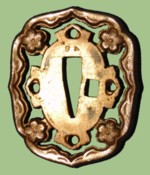
|
The WWII Samurai Sword
The Samurai sword had a prominent status during WWII. Just about every member of the Japanese armed forces was
either issued a sword or brought their own family sword into combat. The spirit of the Samurai warrior was very
present in the minds of the soldiers.
During WWII swords were mass produced for officers in the Imperial Army. These blades were made from foundry steel.
The were of very low quality. They did not have a hammon, hardened edge or many of the other characteristics found
in hand-made swords.
The Post-WWII Samurai Sword
After the war strict rules were put in place to control the existance of weapons in Japan. These rules also applied
to Samurai swords. A family who had a sword which had been handed down from generation to generation could keep
ownership. However, the sword had to be registered with the government.
Any of the swords which were mass produced during WWII cannot be registered and must be destroyed.
The manufacturing of swords was completly banned. The restriction in manufacturing and posession was lifted in 1953.
However, sword makers were held under rules to ensure that they were producing works of art rather than weapons for
war. A list of the rules is included here. They are still in place today.
| Rule 1 |
All swordsmiths must be licensed. to obtain a license the person must serve an apprenticeship under a
licensed sword maker for a period no less than five years.
|
| Rule 2 |
The maximum production of swords from a licensed sword maker is two long swords (over 2 feet) and three
small swords (under 2 feet) per month.
|
| Rule 3 |
All swords must be registered with the police.
|
| Rule 4 |
Any cutting instrument with a length of under 6 inches, which has no hole in the tang is considered to be
a knife an is exempt from these rules.
|
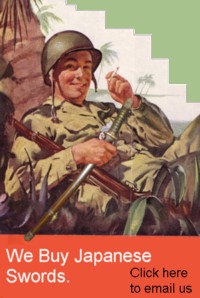
|
WE BUY JAPANESE SWORDS - All types of Japanese edge weapons. Whether it is a WWII era Samurai sword or an
older type of blade.
The process gets started by you sending us an
Email .
We will respond to your inquiry normally within 24 hours and in many cases much faster.
We can tell you what you have, what it is worth and how much we can pay you.
One sword or an entire collection -
Email Us .
|
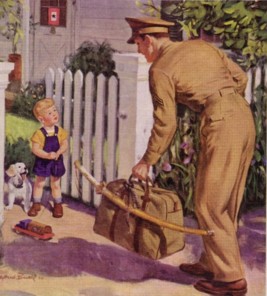 |
|
|
|


